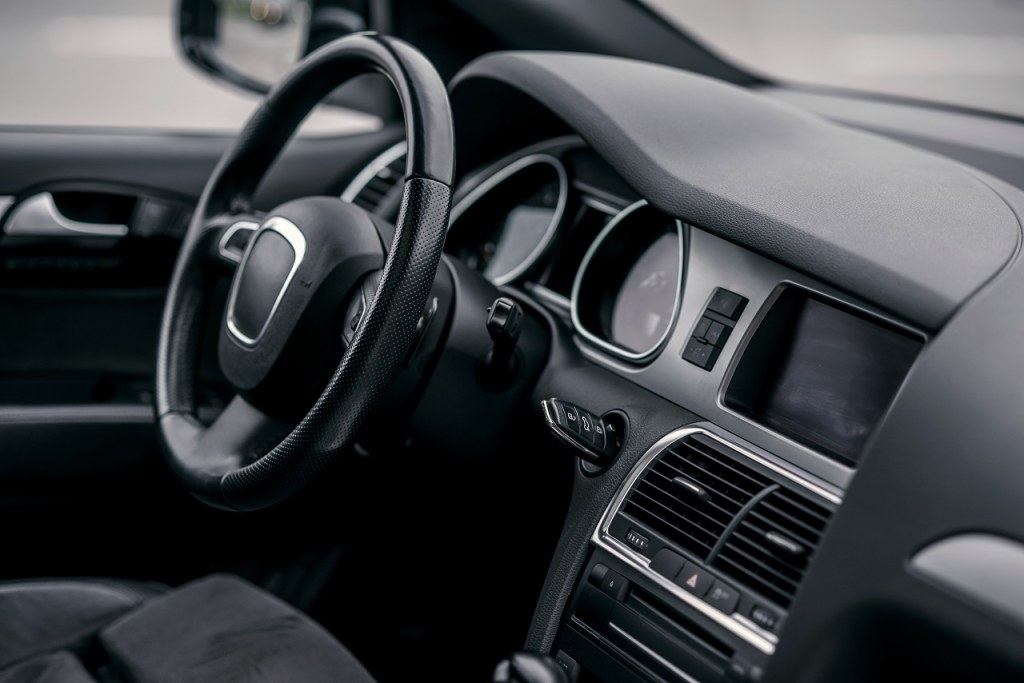Unveiling The Secrets: Exploring The Plastic Types Residing Inside Car Interiors – Click To Discover!
What Type of Plastic Is Used in Car Interiors: A Comprehensive Guide
Welcome, Interior Enthusiast! Are you curious about the type of plastic used in car interiors? As a home lover, it’s essential to stay informed about the materials used in everyday objects, including cars. In this article, we will delve into the world of car interiors and explore the different types of plastic commonly found in them. So, buckle up and let’s begin our journey into the fascinating world of automotive plastics!
Introduction
Car interiors are composed of various materials, and plastic plays a crucial role in providing aesthetics, functionality, and durability. Whether it’s the dashboard, door panels, or seat covers, plastic is extensively used throughout the interior of a car. Understanding the different types of plastic used in car interiors is essential for car enthusiasts, interior designers, and anyone interested in the automotive industry. In this article, we will explore the various types of plastic found in car interiors and their characteristics.
2 Picture Gallery: Unveiling The Secrets: Exploring The Plastic Types Residing Inside Car Interiors – Click To Discover!


1. Polycarbonate (PC) Emoji: 🚗

Image Source: richfieldsplastics.com
Polycarbonate is a popular choice for car interior components due to its high impact resistance and clarity. It is commonly used for instrument clusters, headlight lenses, and interior trim pieces. Polycarbonate offers excellent heat resistance and can withstand harsh weather conditions, making it ideal for automotive applications.
2. Polypropylene (PP) Emoji: 🔧
Polypropylene is another commonly used plastic in car interiors. It is lightweight, durable, and resistant to chemicals, making it suitable for components such as bumpers, door panels, and storage compartments. Polypropylene can be easily molded into various shapes, allowing manufacturers to create intricate designs for car interiors.

Image Source: richfieldsplastics.com
3. Polyurethane (PU) Emoji: 🛋️
Polyurethane is known for its cushioning properties and is commonly used in car seats and upholstery. It provides comfort and support, making long drives more enjoyable. Polyurethane is also resistant to wear and tear, ensuring that car seats maintain their shape and quality over time.
4. Polyvinyl Chloride (PVC) Emoji: 🌈
Polyvinyl Chloride, or PVC, is widely used in car interiors for its versatility and cost-effectiveness. It is often used for door panels, dashboards, and seat covers. PVC can be easily molded into different shapes and textures, allowing manufacturers to create visually appealing interiors.
5. Acrylonitrile Butadiene Styrene (ABS) Emoji: 🔩
ABS is a durable and impact-resistant plastic commonly used in car interiors. It is often found in components such as grilles, trim pieces, and interior door handles. ABS provides structural integrity to car interior parts while maintaining a sleek and polished appearance.
6. Polyethylene (PE) Emoji: 🚙
Polyethylene is a versatile plastic used in various car interior components, including fuel tanks, pipes, and electrical insulation. It is known for its excellent chemical resistance and low friction properties. Polyethylene ensures the longevity and safety of car interiors.
What
Plastic is an integral part of car interiors, providing aesthetics, functionality, and durability. It is used in various components, including dashboards, door panels, seat covers, and instrument clusters. Understanding the types of plastic used in car interiors is crucial for car enthusiasts and interior designers alike.
Who
Car manufacturers, designers, car enthusiasts, and interior designers are interested in understanding the types of plastic used in car interiors. This knowledge helps in making informed decisions about car design, customization, and maintenance.
When
The use of plastic in car interiors has been prevalent for several decades. As technology advances, new types of plastic are being developed to enhance the performance and aesthetics of car interiors.
Where
Plastic is used in car interiors globally. Car manufacturers across the world incorporate different types of plastic into their vehicles to meet safety, performance, and aesthetic requirements.
Why
Plastic is used in car interiors due to its versatility, durability, and cost-effectiveness. It allows designers to create aesthetically pleasing and functional interiors while meeting safety and performance standards. Plastic also offers benefits such as weight reduction, improved fuel efficiency, and ease of maintenance.
How
The different types of plastic used in car interiors are selected based on their specific properties and requirements for each component. Manufacturers choose plastics that offer the desired characteristics, such as impact resistance, heat resistance, flexibility, and clarity. The chosen plastics are then molded into various shapes and textures to create the final car interior components.
Advantages and Disadvantages
Advantages of using plastic in car interiors:
– Lightweight: Plastic components help reduce the overall weight of the vehicle, improving fuel efficiency.
– Versatility: Plastic can be easily molded into various shapes and textures, allowing for innovative and visually appealing designs.
– Durability: Plastic components are resistant to wear, tear, and corrosion, ensuring the longevity of car interiors.
– Cost-effectiveness: Plastic is generally more affordable compared to other materials, making it a cost-effective choice for car interiors.
– Easy maintenance: Plastic surfaces are easy to clean and maintain, providing convenience to car owners.
Disadvantages of using plastic in car interiors:
– Environmental impact: Improper disposal of plastic can contribute to environmental pollution and waste.
– Heat sensitivity: Some types of plastic may be prone to warping or melting under high temperatures.
– Limited recyclability: Not all types of plastic used in car interiors are easily recyclable, posing challenges for proper disposal and waste management.
– Potential health hazards: Some types of plastic may release toxic fumes when exposed to high temperatures or fire.
– Aesthetic limitations: While plastic offers versatility in design, it may not provide the same luxurious feel and appearance as natural materials such as leather or wood.
Frequently Asked Questions (FAQs)
1. Are car interiors made entirely of plastic?
No, car interiors are not made entirely of plastic. While plastic is extensively used, other materials such as leather, fabric, metal, and wood are also commonly incorporated into car interiors for a more varied and luxurious aesthetic.
2. Can plastic in car interiors be recycled?
Some types of plastic used in car interiors can be recycled. However, the recyclability of plastic depends on the specific type and local recycling facilities available. It is essential to check with local recycling guidelines for proper disposal and recycling of car interior plastic components.
3. Are there any health risks associated with plastic in car interiors?
Plastic materials used in car interiors undergo rigorous testing to ensure they meet safety standards. However, some types of plastic may release toxic fumes when exposed to high temperatures or fire. It is crucial to follow safety guidelines and avoid smoking or using open flames inside the car.
4. How can I clean and maintain plastic car interior components?
Plastic car interior components can be cleaned using mild soap and water or specialized automotive interior cleaners. It is essential to avoid using abrasive cleaning agents or rough scrubbing tools that may damage the plastic surface. Regular cleaning and maintenance help preserve the quality and appearance of plastic car interior components.
5. Can plastic car interior components be repaired if damaged?
In some cases, plastic car interior components can be repaired if they are damaged. Depending on the severity of the damage, professional repair services or DIY repair kits may be available. However, it is recommended to consult with experts or follow manufacturer guidelines for proper repair procedures.
Conclusion
In conclusion, understanding the types of plastic used in car interiors is essential for car enthusiasts and interior designers. Plastic offers numerous benefits, including versatility, durability, and cost-effectiveness. However, it is essential to consider the advantages and disadvantages of plastic in car interiors, such as its environmental impact and limited recyclability. By being informed about the materials used in car interiors, we can make conscious decisions to create and maintain visually appealing and functional automotive spaces.
Final Remarks
As we navigate the world of car interiors, it’s crucial to consider the environmental impact of plastic and explore sustainable alternatives. While plastic offers many advantages, we should strive to minimize waste and promote responsible disposal and recycling practices. By choosing materials wisely and maintaining our car interiors with care, we can contribute to a more sustainable and enjoyable automotive experience. Happy driving, Interior Enthusiast!
This post topic: Interiors


